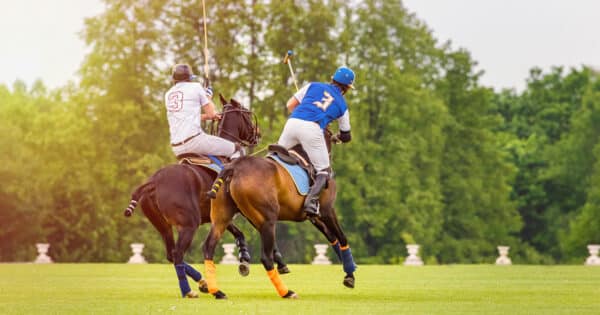For even most non-golfers, the name of the PGA Tour would likely resonate with the masses as the leading golf product worldwide – alongside other great sporting events, such as Wimbledon for tennis, the Premier League for football, and the NBA for basketball – and with Rory McIlroy’s momentous grand slam victory at the Masters 2025 and Scottie Scheffler’s PGA Championship win, the sport’s popularity has never been higher.
So, when a new competitor league started to emerge in October 2021, why was this frankly such a big deal? And why did it involve various parties and players in litigation? And why exactly was it called LIV? (more on all of these below!)
How did LIV start?
Spearheaded by one of the most renowned Australian golfers – Greg Norman – along with Saudi Arabian financial backing (the Public Investment Fund), LIV golf quickly became a hot topic amongst the golfing world, given its controversial backing, shake-up of traditional golfing event structures, a team-based approach and some major household names defecting from the PGA Tour. The 54-hole 3-day no-cut tournament (of which it gets its name – LIV being 54 in Roman numerals), contrary to the PGA Tour’s 72-hole 4-day second-day cut, was an unexpected but exciting development within the professional golfing sphere given that the monolith that is the PGA Tour had gone without a direct competitor (so we’ll exclude the DP World Tour for these purposes!) arguably since its incorporation and players could now be involved in a professional golfing tournament with a guarantee that they will get paid just for playing.
That’s right – for you non-golfers out there – traditionally, often players (even exceptionally famous ones!) can enter into tournaments and not make a penny from the tournament rankings itself if they ultimately do not play well enough. This is, of course, separate from any money they may make from sponsorships, endorsements, appearance fees etc. but nevertheless they could go home with much less than expected if their play is not up to standard.
Suspensions, bans and lots of argument
The threat of competition, however, seemingly concerned the PGA Tour and it’s long-standing legacy, so much so that those becoming involved within LIV were hit with playing suspensions and financial penalties (including some litigation – instigated by both players and the Tour respectively), with some of these issues still subsisting or needing to be paid, albeit the situation was made even less clear when a shock announcement was made by the PGA Tour – without informing some of its most important stakeholders and players, such as Rory McIlroy – that after years of animosity, there was a framework for merger announced in June 2023, albeit nothing further has really developed since then and some commentators question whether it may even happen at all.
Whilst these sanctions have somewhat eased up since LIV’s introduction, and most LIV players (subject to them playing well enough through the year, or through invitation) can still now qualify for the four major tournaments and other wider events, the overall golfing world is still somewhat muddy when it comes to who can play and where, with ambiguity also setting in regarding whether the industry has been permanently fractured forever.
Possible merger: a spate of the shanks or a purple patch?
Even if a merger can be finalised between the two tours, would this resolve all the issues? Some commentators think not.
It is evident from recent events in other sporting arenas, that legal disputes in the sporting world are on the rise. Take for example the recent announcement that The Professional Players Association (PTPA), backed by a number of high-profile professional tennis players, has filed legal action against the organisers of the professional tennis tours, the Association of Tennis Players (APT) and the Women’s Tennis Association (WTA), and other tennis governing bodies, alleging that they have engaged in practices that supress competition and impact player welfare. Could professional golfers use this legal action as a template for a challenge of their own?
There has already been one significant legal battle in the golf civil war. LIV attempted to claim that the PGA’s actions, such as suspending LIV players and banning them from competing in PGA sanctioned events, caused LIV players to lose the chance to earn money, world ranking points and other benefits on the PGA Tour. The claim was ultimately unsuccessful, because the courts concluded that LIV golfers had failed to demonstrate irreparable harm (it was decided that the financial compensation – which in some cases has reportedly been very hansom – paid to such golfers by LIV took into account the potential losses from being suspended from the PGA Tour).
Whilst LIV’s claim was not successful, would those golfers that remained loyal to the PGA have a claim for loss of chance, being the loss of significant financial compensation from LIV, if a merger is agreed?
Would LIV golfers have a claim for the period in which they were unable to accumulate significant world ranking points?
Could golfers bring an action that the merged tour is anti-competitive, thereby restricting their ability to earn a living and being subject to stringent media and other requirements (perhaps any golfers with such thoughts may await the outcome of the PTPA action).
It is unclear what the future holds for the world of golf, but many will be watching with anticipation.







